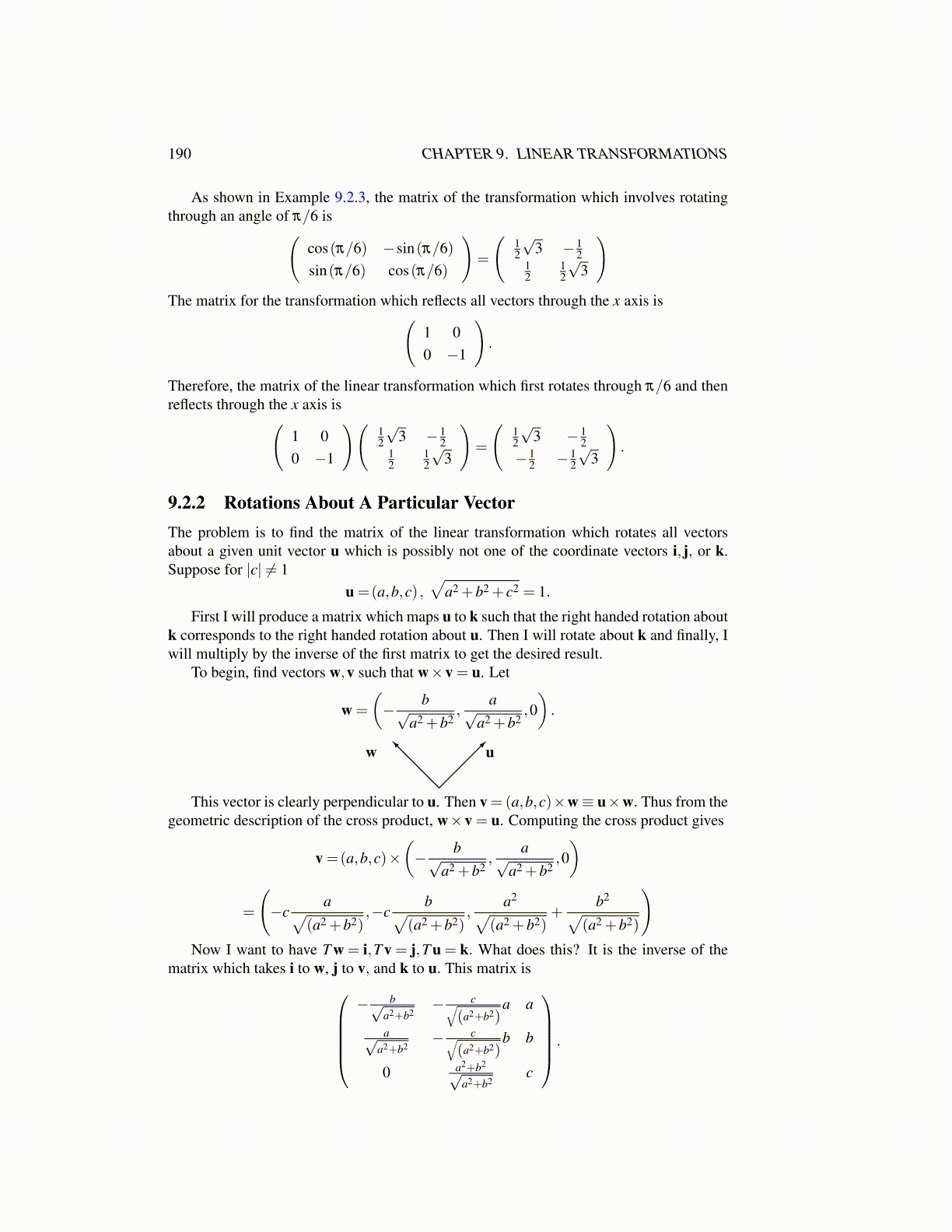
190 CHAPTER 9. LINEAR TRANSFORMATIONS
As shown in Example 9.2.3, the matrix of the transformation which involves rotatingthrough an angle of π/6 is(
cos(π/6) −sin(π/6)sin(π/6) cos(π/6)
)=
(12
√3 − 1
212
12
√3
)The matrix for the transformation which reflects all vectors through the x axis is(
1 00 −1
).
Therefore, the matrix of the linear transformation which first rotates through π/6 and thenreflects through the x axis is(
1 00 −1
)(12
√3 − 1
212
12
√3
)=
(12
√3 − 1
2− 1
2 − 12
√3
).
9.2.2 Rotations About A Particular VectorThe problem is to find the matrix of the linear transformation which rotates all vectorsabout a given unit vector u which is possibly not one of the coordinate vectors i, j, or k.Suppose for |c| ̸= 1
u =(a,b,c) ,√
a2 +b2 + c2 = 1.
First I will produce a matrix which maps u to k such that the right handed rotation aboutk corresponds to the right handed rotation about u. Then I will rotate about k and finally, Iwill multiply by the inverse of the first matrix to get the desired result.
To begin, find vectors w,v such that w×v = u. Let
w =
(− b√
a2 +b2,
a√a2 +b2
,0).
uw
This vector is clearly perpendicular to u. Then v = (a,b,c)×w≡ u×w. Thus from thegeometric description of the cross product, w×v = u. Computing the cross product gives
v =(a,b,c)×(− b√
a2 +b2,
a√a2 +b2
,0)
=
(−c
a√(a2 +b2)
,−cb√
(a2 +b2),
a2√(a2 +b2)
+b2√
(a2 +b2)
)Now I want to have T w = i,T v = j,T u = k. What does this? It is the inverse of the
matrix which takes i to w, j to v, and k to u. This matrix is− b√
a2+b2− c√
(a2+b2)a a
a√a2+b2
− c√(a2+b2)
b b
0 a2+b2√a2+b2
c
.